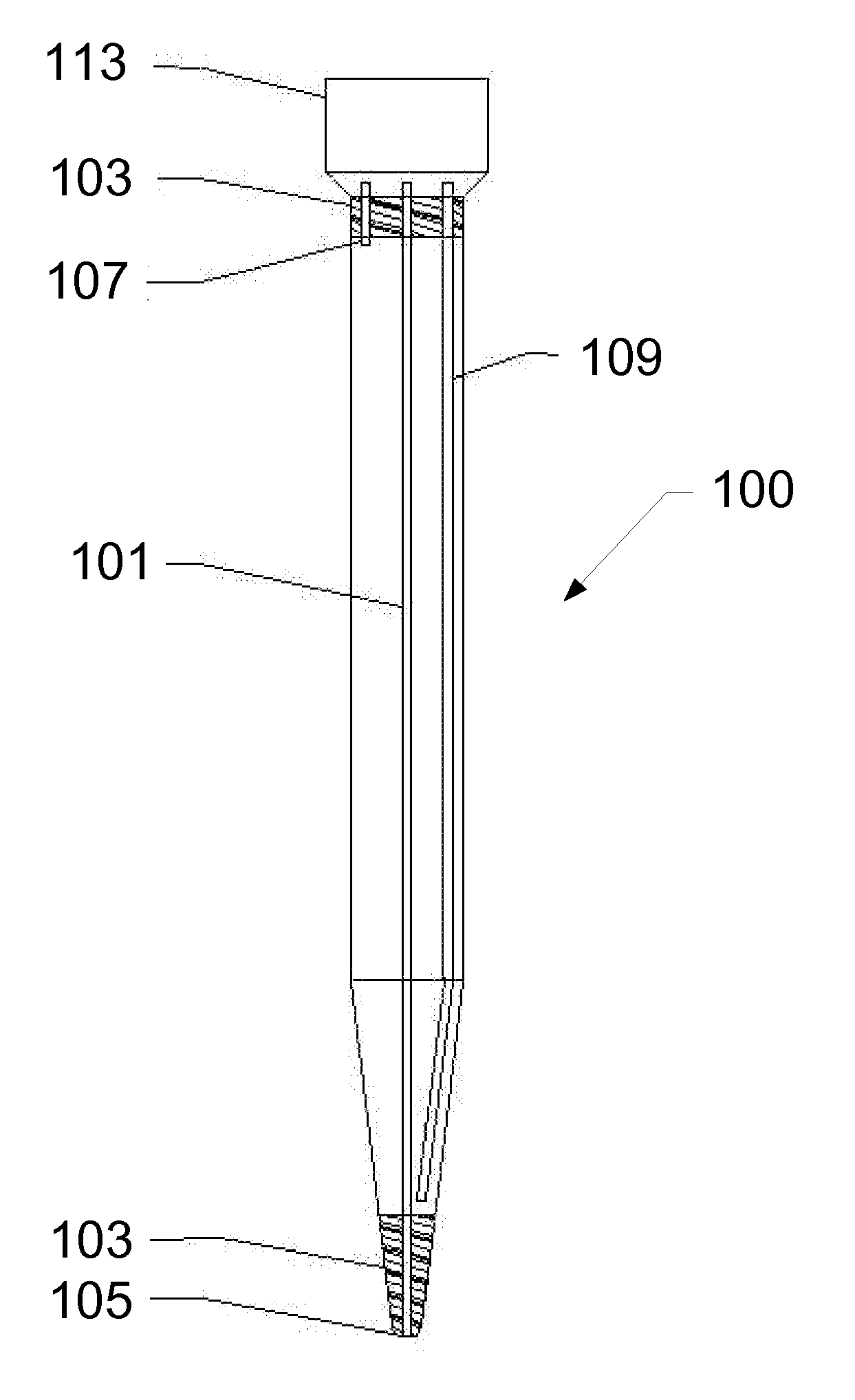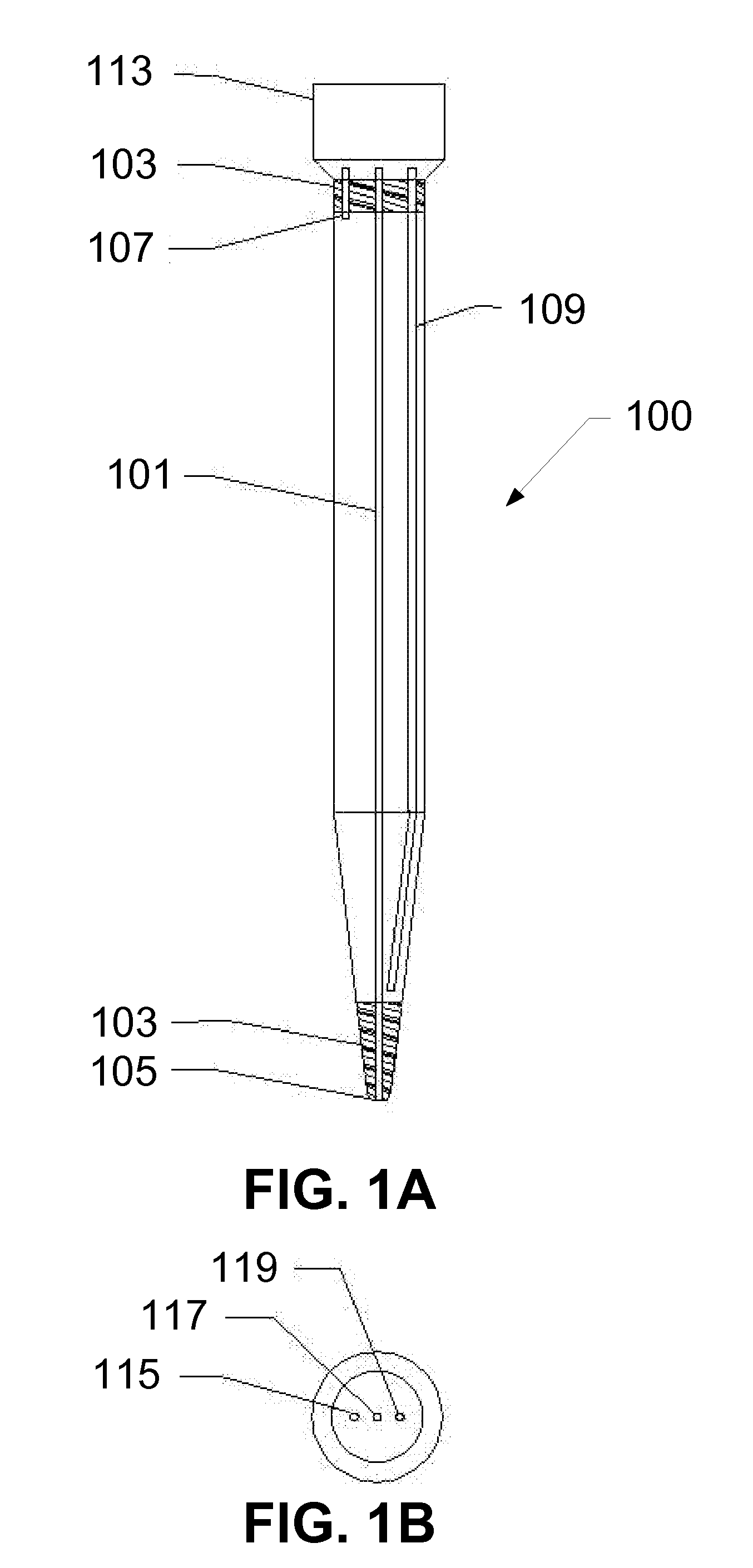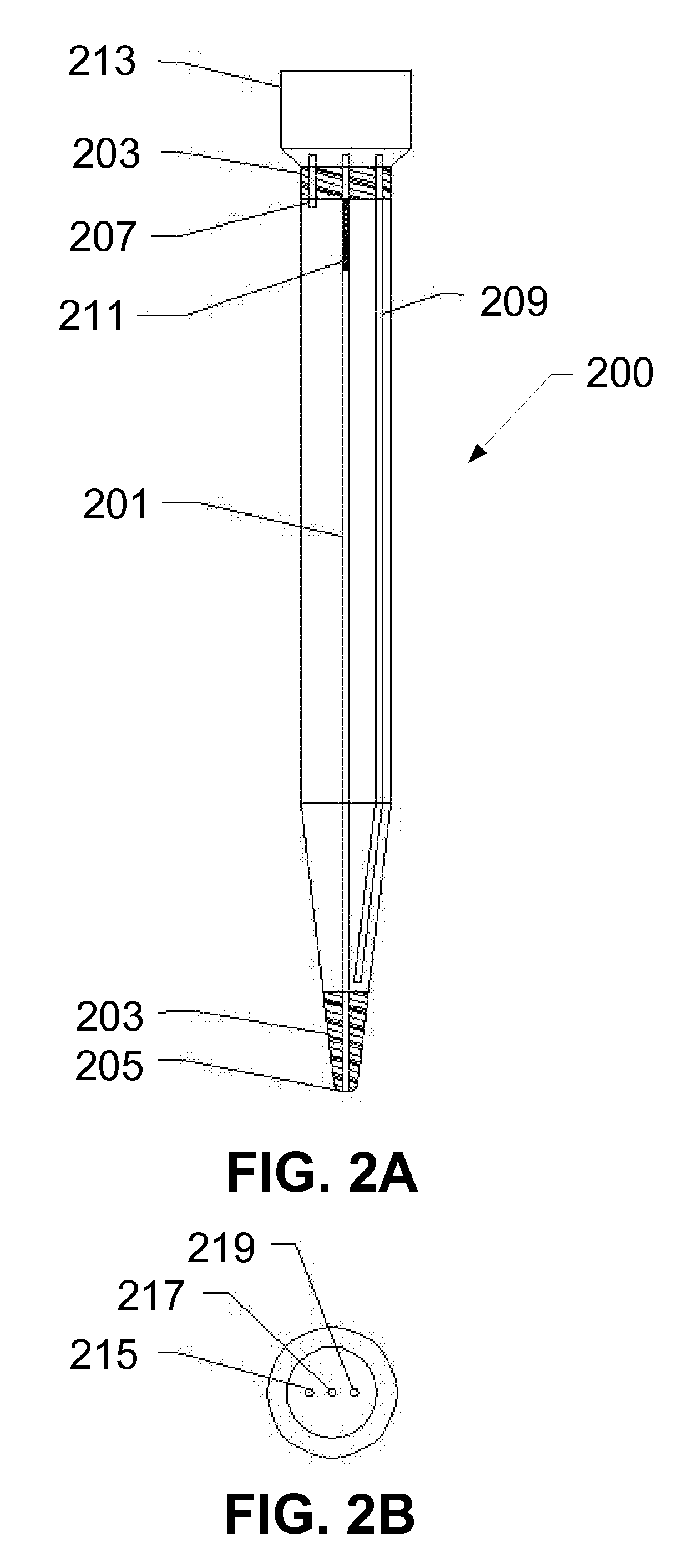Liquid to Liquid Biological Particle Concentrator with Disposable Fluid Path
a technology of biological particle and concentrator, which is applied in the field of sample preparation, can solve the problems of inability to detect and quantify dilute materials in liquids, failure of existing systems, and inability to detect analyte at very low concentrations
- Summary
- Abstract
- Description
- Claims
- Application Information
AI Technical Summary
Benefits of technology
Problems solved by technology
Method used
Image
Examples
Embodiment Construction
[0044]The present invention is a highly efficient filtration-based concentration system with sample fluidic lines and a filter packaged in a disposable concentrating pipette tip. All conduits by which the disposable concentrating pipette tip attaches to the concentrator unit instrument are combined into a single connection point on the upper end of the concentrating pipette tip. The concentrating pipette tip (CPT) works with a system including a concentrator unit and a liquid sample. To operate the system, a new clean concentrating pipette tip is attached to the concentrator unit and the lower opening of the concentrating pipette tip is dipped into a liquid sample contained in an appropriate sample container and the concentrator unit is activated. The use of a new clean concentrating pipette tip ensures that there is no sample-to-sample carryover. The sample is then aspirated into the CPT where it comes into contact with a filter. The liquid is passed through the filter while partic...
PUM
| Property | Measurement | Unit |
|---|---|---|
| volume | aaaaa | aaaaa |
| volume | aaaaa | aaaaa |
| volumes | aaaaa | aaaaa |
Abstract
Description
Claims
Application Information
 Login to View More
Login to View More - R&D
- Intellectual Property
- Life Sciences
- Materials
- Tech Scout
- Unparalleled Data Quality
- Higher Quality Content
- 60% Fewer Hallucinations
Browse by: Latest US Patents, China's latest patents, Technical Efficacy Thesaurus, Application Domain, Technology Topic, Popular Technical Reports.
© 2025 PatSnap. All rights reserved.Legal|Privacy policy|Modern Slavery Act Transparency Statement|Sitemap|About US| Contact US: help@patsnap.com



